How do you keep a still gaze on Michelangelo’s David? Well, I did not. Forget about his biblical nature. David is butt-naked!
A quick look at the exhibitionistic piece of marble is enough to arouse one’s imagination. Oh yes! Tell that to the giggling group of Japanese ladies or the young Arab couple or the American lady who couldn’t have flashed a more mischievous glint.
Stealing glances at the statue of David can be all too consuming, especially when you are expected to keep a poker face. Of course, the world hails it as one of the finest works of art. Endowed with seemingly perfect chiseled abs, the figure’s athletic muscles, looking tense yet elegant on top of a taut torso, veins bulging out on the right hand and voluminous curly hair complemented by a stirring facial expression; in which, if not all, can also be mistaken for an early form of Renaissance porn.
Right in the heart of Florence, beside a small open piazza and close to a 13th century university, is the Galleria dell’ Accademia. Inside this museum, under the fortified dome, is where David stands. The statue has proudly held court since 1873 after its relocation from its original position in Piazza della Signoria. As a masterpiece, it’s so good, it’s stimulating. While postcards of David are censored midway, many are even more drawn to see the other half ironically.
But I didn’t come to Florence, the ‘Cradle of Renaissance’ to see David in full-frontal (this was just my second agenda), rather I was on a quest to apply for the elusive US tourist visa. I have heard terrible stories in the past about this process. Applicants being turned down and some are even barred from entering the United States. For third world countries like the Philippines where I came from, a strict scrutiny is rigidly imposed. Americans even use the term ‘alien’ in reference to those who are planning to immigrate to the ‘Land of the Free’. Of all places, to seek an American visa in Florence, why not?
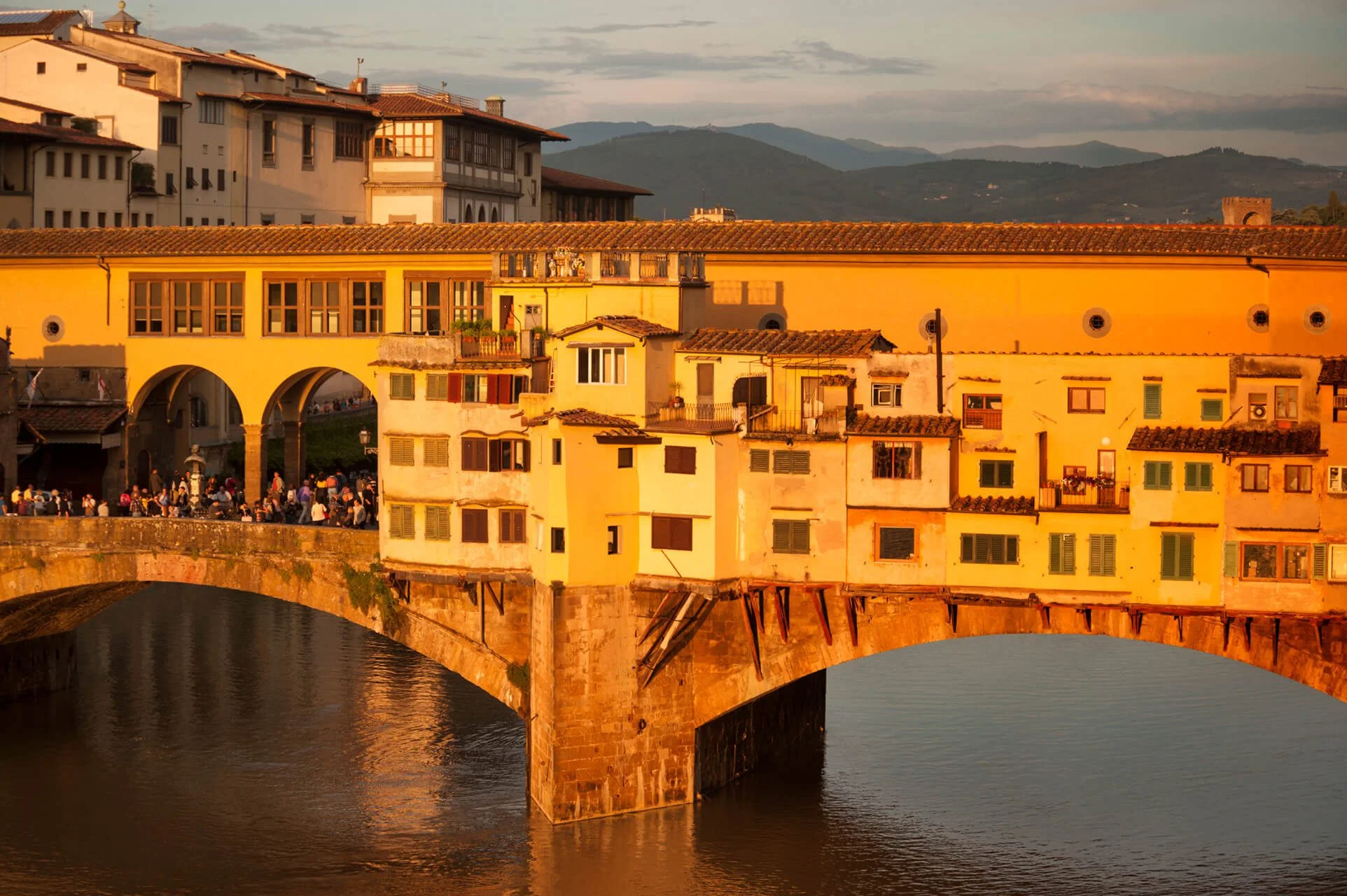
It was the beginning of spring when I arrived in the city that straddles the Arno River. I was told that complaining was a time-honored tradition here, as hordes of tourists choke every street and cranny. Yet, I wasn’t going to simply turn around. It was far too late to cancel my appointment at the American consulate. Emancipating myself from any form of pressure, I decided to cast my gaze instead at the city rejuvenating itself from the long winter nap. Church bells tolled in unison with the swallows reciting operas, locals flung their scarlet-painted shutters open as the snow-capped mountains that rose from the terracotta rooftops looked distant and far removed.
Leaving Michelangelo’s David behind, I continued to wander and navigated the maze of narrow cobblestone alleyways. The bright Tuscan sky bathed the city in a buttery glow. Piazzas and palazzos, cathedrals and courtyards and fountains glistened. For nearly 250 years since the fourteenth century, Florence was the most integral city in Europe. It was the center of economy, policies and culture. Europe was dragged out of the ‘Dark Ages’ when Florentines introduced the gold florin reinventing how people conduct trade as well as politics. As skillful merchants, they financed almost everything from industries and royalties, to expeditions and the papacy.
Nothing exceptional like this however will likely occur today. While the city continues to drive growth developing its infrastructures, putting up more medical colleges and spending millions improving its lower income neighborhoods like it had done since the time of the Renaissance, a great degree of Italian politics is anything but a trapeze act. The country became one of the first Eurozone victims of the global financial crisis in 2008 and incurred the second-highest public debt in the Eurozone by mid-2012. If the old florin were to make a comeback, it could probably drag Italy out from the current crisis. A wishful thinking at the very least.
It wasn’t long when my eyes caught a glimpse of the imposing neo-Gothic façade of the Cattedrale di Santa Maria del Fiore looming in the distance. Known as the Duomo, it is the largest brick dome ever built and the eternal landmark that dominates the skyline of Florence. I sliced my way through the thick mob and made a split-second decision to dash to Santa Croce’s square instead.
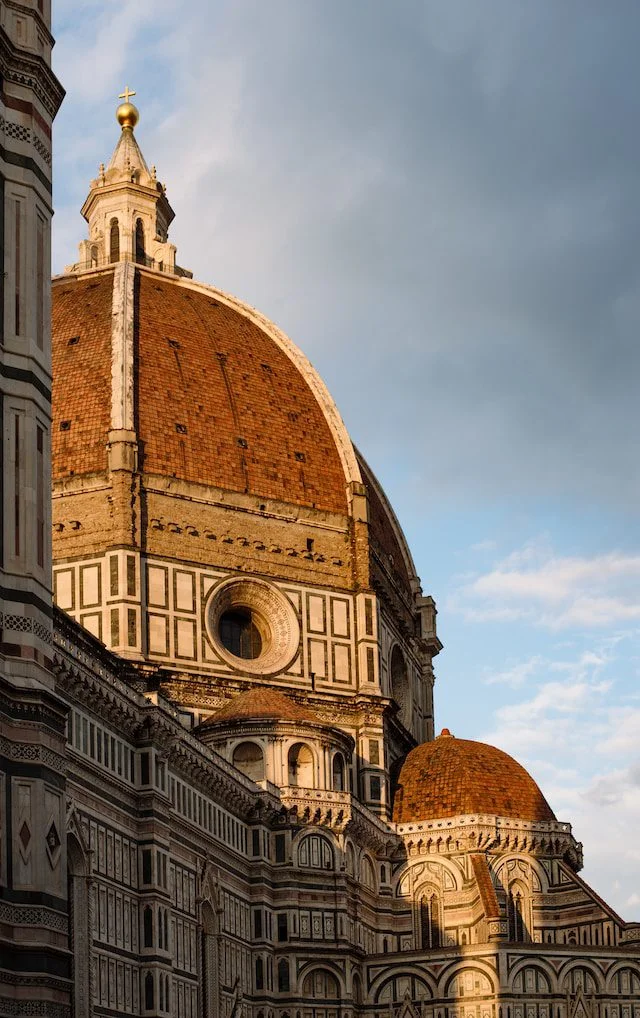

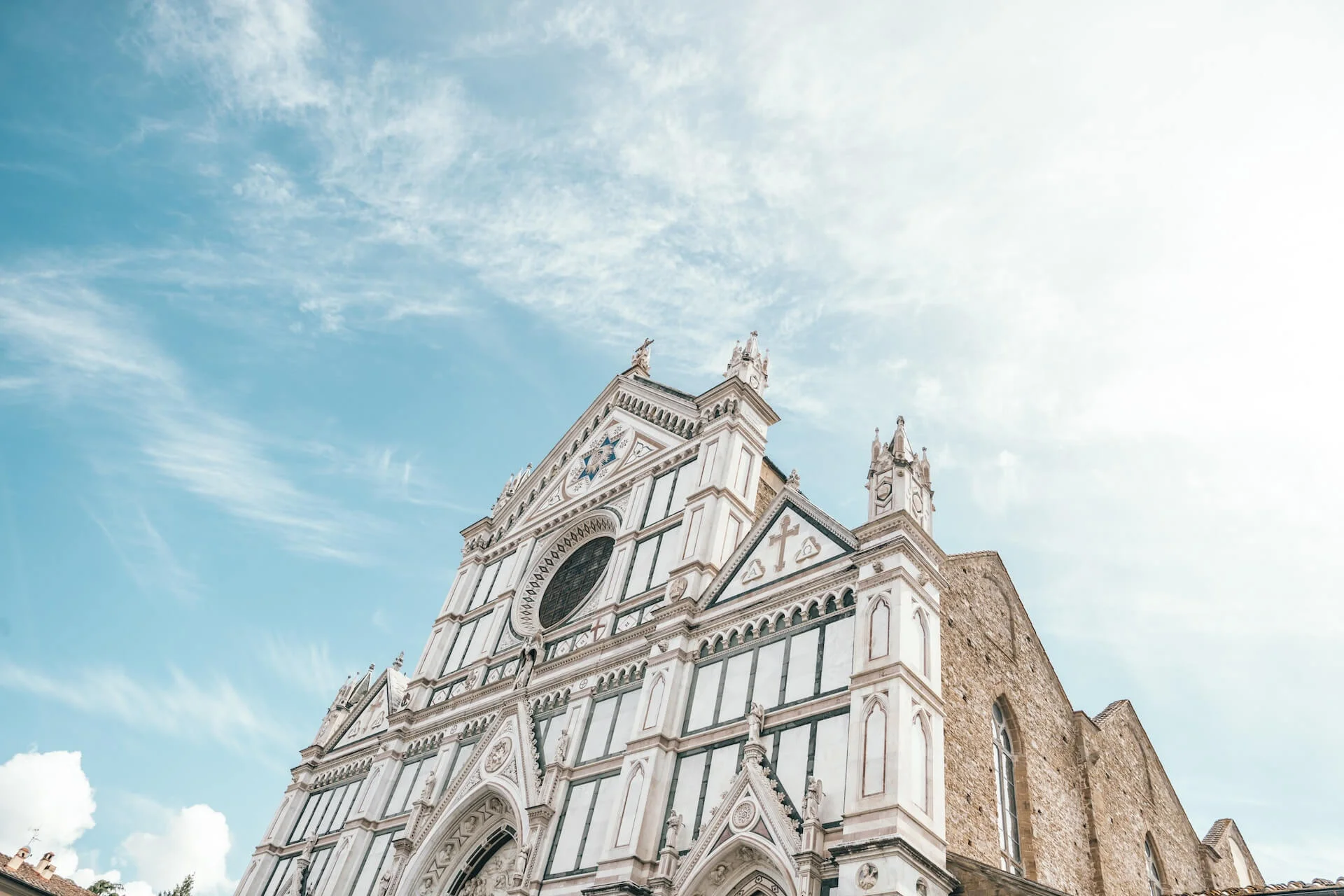

The white-marble-fronted basilica that opens up to a piazza was once a sanctuary of Florence’s displaced. Once inside, each step brought me closer to Florence’s unimaginable treasures: the tombs of Michelangelo, Machiavelli, Rossini and Galileo. Perhaps they may all look down upon me and shower me with some luck. I told myself this while contemplating on Giotto’s discipline whose 13th century frescoes bedecked its walls.
I continued on to the teeming Jewish quarter, jammed with trattorias, botteghe (small shops) where one can still observe artists at work in crammed studios. Downing a stand-up espresso is a favored pastime in this neighborhood. I couldn’t help but fall in love with the unassuming café festooned with brown paper clippings taped all over the wall. University students and families dine here with gusto, chatting with their hands while munching on sandwiches pregnant with ham, salamis and tomatoes all dripping in olive oil.
Florence does not run out of sights to see and prescribed stops to wander about. The best way to experience the city however is to get away from the madding crowd. At the Palazzo della Gherardesca, once a summer retreat for the Medici family, a certain kind of Florentine flair is within easy reach. It sits opposite a refurbished convent of almost equal grandeur. Here, one enters into a truly Tuscan oasis.
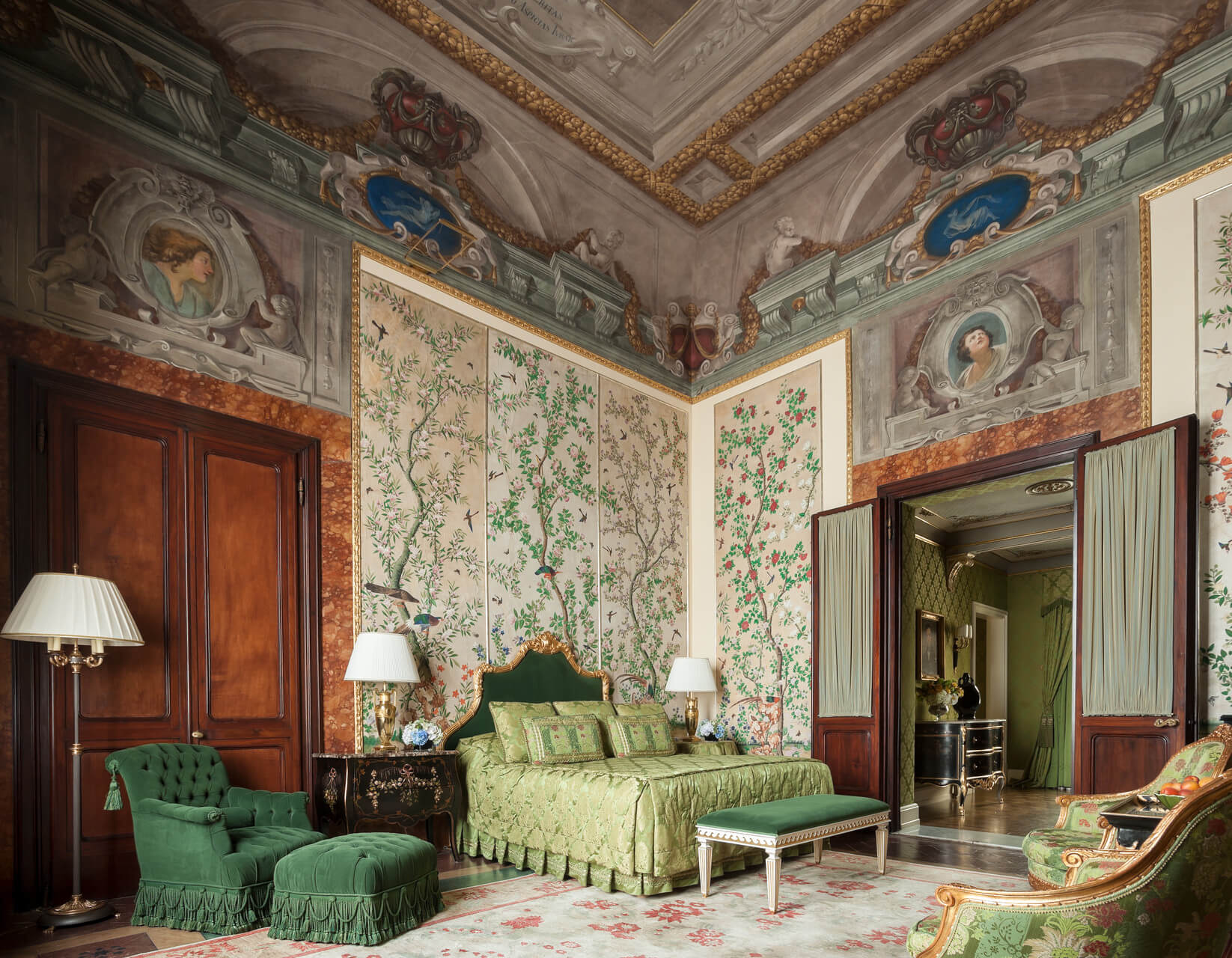



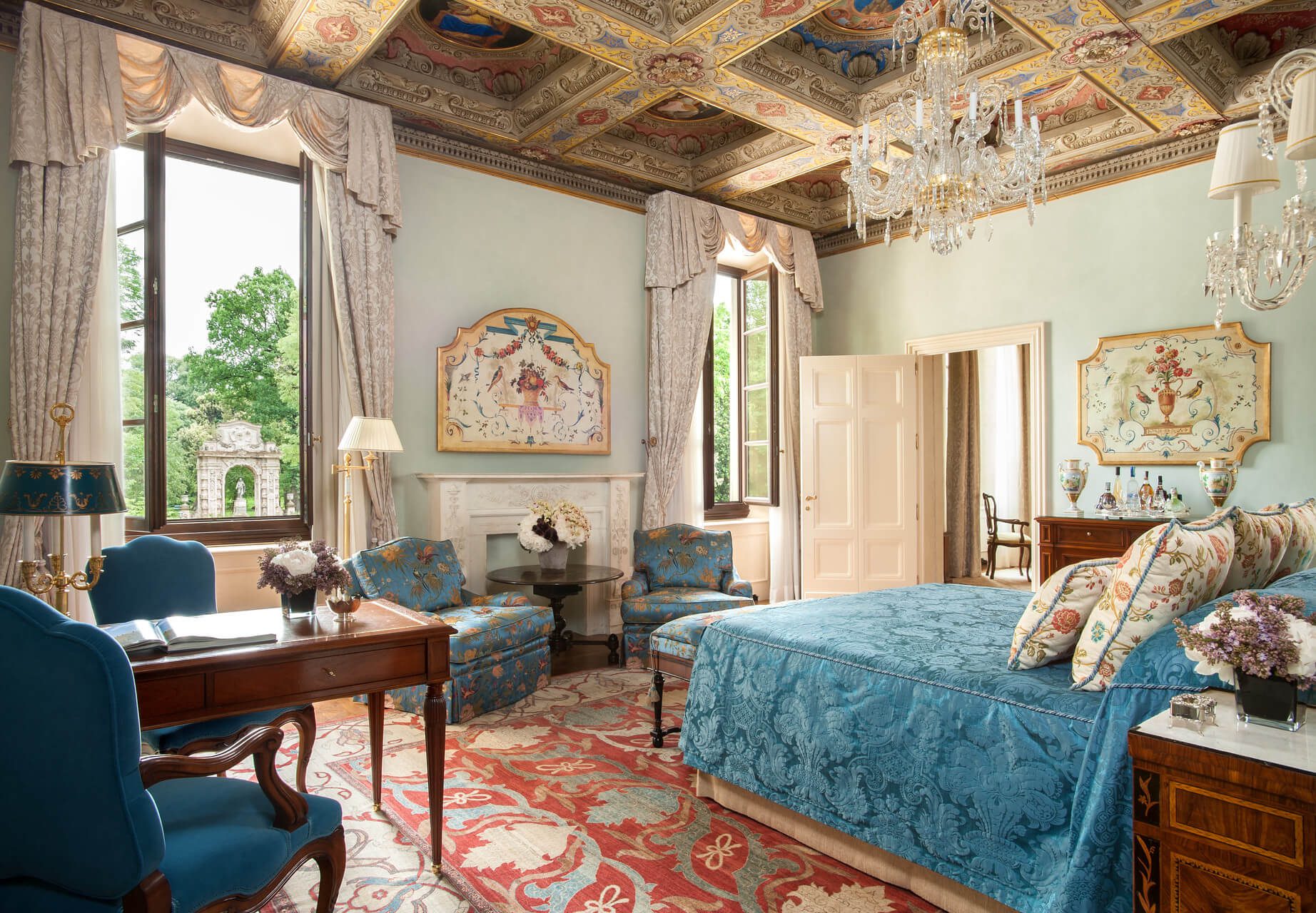

Run by the Four Seasons Hotel group, painstaking restorations were undertaken. The two estates set amongst the city’s largest private gardens not only sanctuaries of calm accommodation but also doubles as living museums. Palazzo della Gherardesca had long sheltered popes, generations of Florentine nobles, diplomats and big time business magnates. The Conventino, a former 16th century convent, is now a 37-room stately villa sought after by the well heeled class.
Absorbing the crispness of spring, I went to see the various expressions of art that the palazzo houses before climbing to the watchtower. There were stuccos, oil paintings, silk wallpapers and bas-reliefs portrayed in poetic piousness and drama. I grew to love the craftsmanship that runs throughout the palazzos 116 opulent rooms.
The views after ascending from a steep, tight passageway afforded unparalleled vista that has existed since the time of the city’s awakening. The corrugated brick roofs and the craggy line they make, the austere geometry of the Duomo, windows resembling small boxes and the rolling Tuscan hills in silhouette. I drank it all, like a good Italian prosecco before a sweaty-palmed descent thereafter.
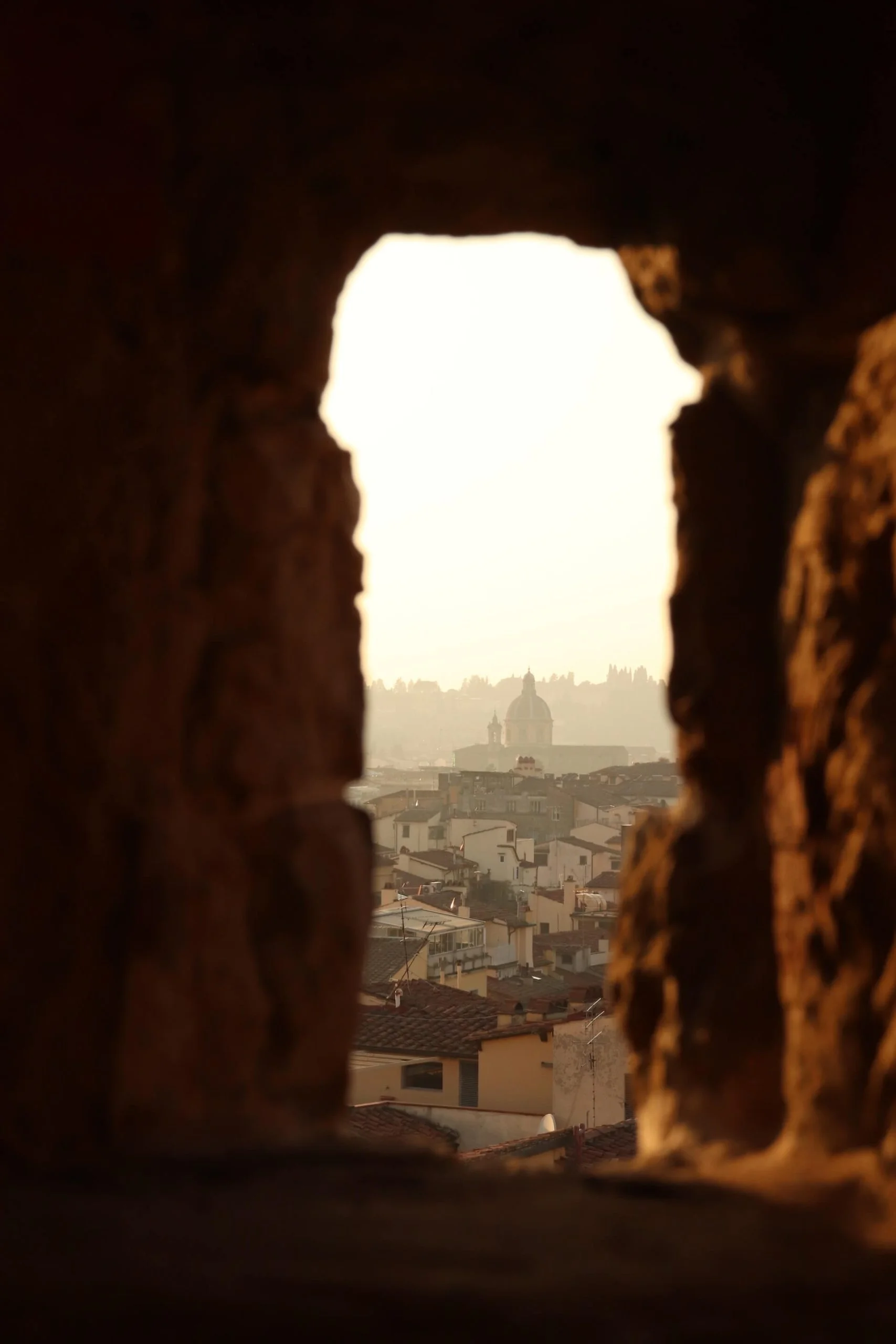

My time in Florence went by swiftly in the same way as it did with my appointment at the American consulate. Should I fail to convince my interviewer about my plans of coming to America; and if my quest for a US tourist visa were to end in vain, I have succeeded nonetheless coming to a place that gave the world Michelangelo, Galileo, Leonardo, Raphael, Machiavelli, Dante, Botticelli and above all Amerigo Vespucci who bestowed the New World its name “America”.
I remember looking out from the American consulate balcony that day, which lies on the gurgling banks of the River Arno. Further down was the medieval bridge shop-infested Ponte Vecchio along with the raucous vespas passing by and the modest city drowned in an enduring hum. In the words of E.M. Forster, ‘One doesn’t come to Italy for niceness. One comes for life’.
And oh about the visa? I finally got myself one. Buongiorno America.
BUTTER MY BAGUETTE
This website made of love strives to produce FREE CONTENT.
Help me tell more stories and keep this website free of any advertisement by supporting Flying Baguette in inspiring more people and connecting you with other cultures and communities around the world. Donate a little or as much as you can afford to keep the magic of Flying Baguette going for years to come. Support by clicking the icons below ⬇️
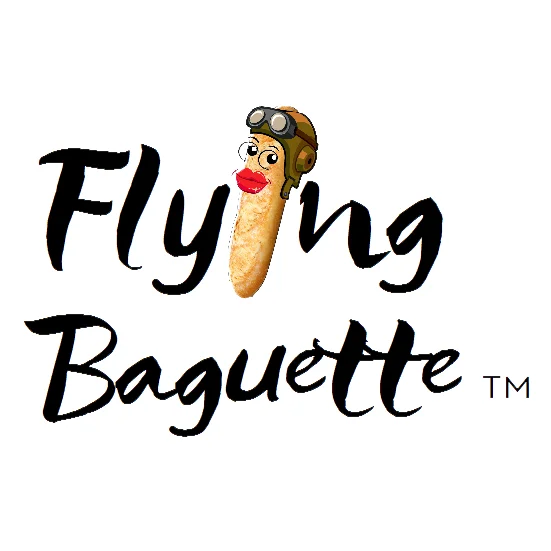




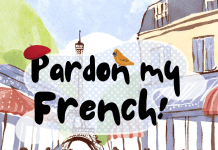
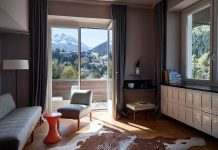
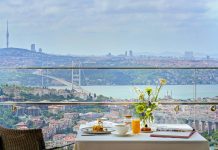

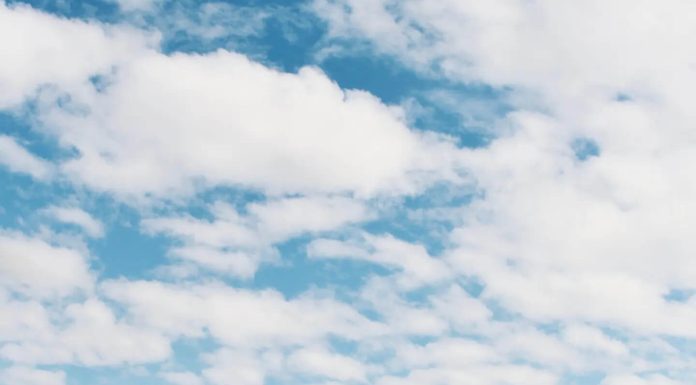









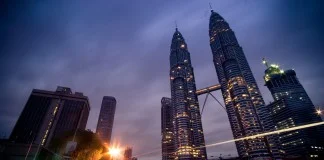
The first time I visited Florence was in 1997 (then I went back in 1999) and I have fabulous memories of the visit. It’s a city that makes your jaw drop all the time, not just because of David, but because of the vibe you feel in the streets. You can breathe culture there.
I have to go back and explore the city, this time with the eyes of someone who has seen more of the world.
Once again, I loved your way of storytelling 🙂
What a great place to do a boring task! I had no idea you could apply for a visa at a consulate (but I am an American). Fingers crossed everything works out, but I’m glad you got to experience Florence. I was not expecting to like Florence as much as I did to be honest!
Making the most out of a mundane task such as applying for documentation with a trip to this fabulous city? Well done. Of all the cities in Italy I’m still desperate to see, Florence is alarmingly high. And it’s not for the Renaissance porn… entirely. Which by the way would be a great museum wing/room designation – you should sell that idea! The cathedral, the art, the history and the views, I feel like I would fall in love with Florence just as quickly as I would descend into a carb-fuelled pasta coma here.
It has been many years since I was in Florence but the memories are still there of this beautifully aged city.
The buildings just give of history and charm and those hotel rooms look divine.
Wish I could afford to stay in a Four Seasons Hotel one day – in my dreams.
Florence holds a lot to see and I didn’t get to see all I wanted to in the 3 days I was there.
It’s a fabulous city!
I have to say, your first paragraph made me giggle like a naughty schoolgirl! We have yet to visit Florence but desperately want to explore the city (and admire David, of course). However the crowds do put us off somewhat. It was good to learn that the city has so much more to offer than its star attractions. Santa Croce looks delightful. As does the Palazzo della Gherardesca.
It was interesting that it was a visa application that brought you to the city. Congratulations on your successful visa acquisition and we look forward to reading of your American adventures…
Florence is one of my favourite cities in Italy and I never tire of looking at David… just for artistic purposes, of course. You’ve captured the city well with its incredible buildings and the atmosphere felt on the (crowded) streets. Palazzo della Gherardesca sounds like a place I’d like to spend time.
My Canadian passport allows me to travel to many places without a visa but when I do have to apply, it is always a much more complicated process than I ever expect. I’m glad you enjoyed your time in Florence and were successful!
Lyn | http://www.ramblynjazz.com
Gutted I missed out on seeing David when I went to Florence 6 years ago. He is quite the man, right? Imagine someone like him still walking the earth, my biology would not cope with that. Thirst comment over 😀 Interesting that a visa application led you to Florence in Italy, and well done on getting the approval for it! I hope for the follow up story from America now 🙂
Carolin | Solo Travel Story